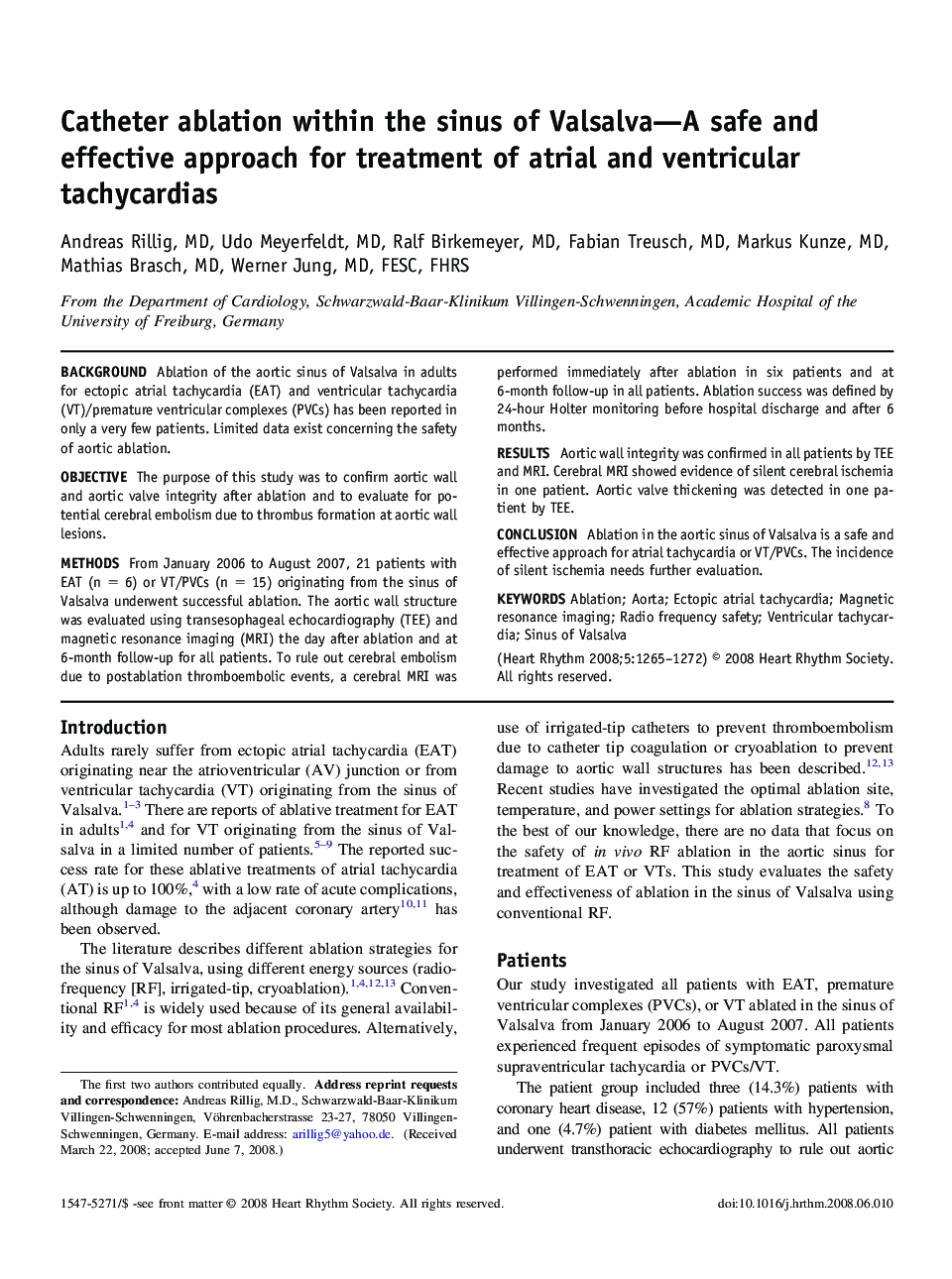| Article ID | Journal | Published Year | Pages | File Type |
|---|---|---|---|---|
| 2924207 | Heart Rhythm | 2008 | 8 Pages |
BackgroundAblation of the aortic sinus of Valsalva in adults for ectopic atrial tachycardia (EAT) and ventricular tachycardia (VT)/premature ventricular complexes (PVCs) has been reported in only a very few patients. Limited data exist concerning the safety of aortic ablation.ObjectiveThe purpose of this study was to confirm aortic wall and aortic valve integrity after ablation and to evaluate for potential cerebral embolism due to thrombus formation at aortic wall lesions.MethodsFrom January 2006 to August 2007, 21 patients with EAT (n = 6) or VT/PVCs (n = 15) originating from the sinus of Valsalva underwent successful ablation. The aortic wall structure was evaluated using transesophageal echocardiography (TEE) and magnetic resonance imaging (MRI) the day after ablation and at 6-month follow-up for all patients. To rule out cerebral embolism due to postablation thromboembolic events, a cerebral MRI was performed immediately after ablation in six patients and at 6-month follow-up in all patients. Ablation success was defined by 24-hour Holter monitoring before hospital discharge and after 6 months.ResultsAortic wall integrity was confirmed in all patients by TEE and MRI. Cerebral MRI showed evidence of silent cerebral ischemia in one patient. Aortic valve thickening was detected in one patient by TEE.ConclusionAblation in the aortic sinus of Valsalva is a safe and effective approach for atrial tachycardia or VT/PVCs. The incidence of silent ischemia needs further evaluation.
